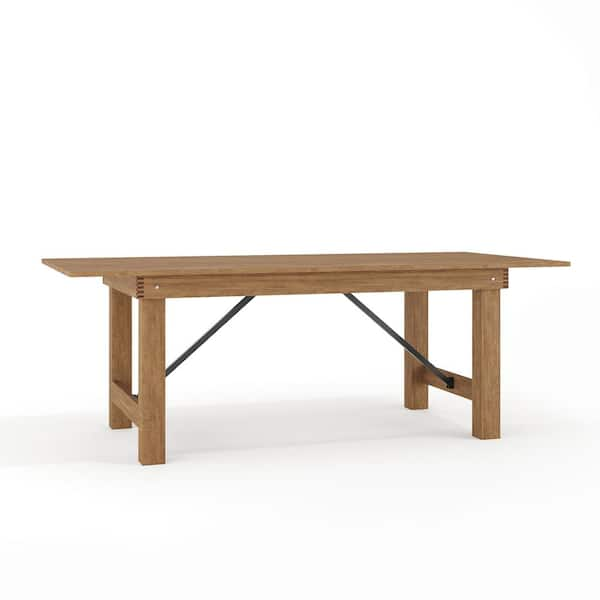Exploring the Various Types of Eating Table Legs Timber for Your Eating Area
The choice of table legs timber can profoundly affect both the functional and aesthetic high qualities of your dining room. Strong wood choices, such as oak and walnut, provide a traditional look with unmatched resilience, while crafted timber choices offer innovative designs that imitate the splendor of natural grains. Additionally, the growing pattern of recovered timber introduces a lasting component that interest ecologically aware consumers. As we discover these various alternatives, it comes to be important to think about not just the visual charm however likewise the practical ramifications of each material selection. What elements should assist your choice?
Solid Wood Options

Unlike crafted materials, strong wood is much less vulnerable to warping and damage over time when effectively kept. Each piece of solid timber is one-of-a-kind, showcasing private attributes that include to the beauty and character of the dining table.
In addition, solid timber can be ended up in numerous methods, varying from natural oils to stained coatings, permitting property owners to customize their furniture to match their design. In summary, selecting solid wood for dining table legs not just ensures architectural honesty yet additionally boosts the visual appeal of the dining area, making it a beneficial investment for any kind of home.
Engineered Wood Alternatives

Plywood, created from multiple layers of wood veneer, is secure and specifically strong, making it an outstanding option for eating table legs. Its layered make-up permits it to stand up to changes in moisture and temperature level much better than typical solid timber. MDF, on the other hand, supplies a smooth surface area for painting or veneering, allowing designers to attain a refined look while maintaining structural honesty.
Particleboard, commonly made use of in economical alternatives, provides suitable stamina and is light-weight, making it much easier to handle. Nevertheless, it may not be as resilient as plywood or MDF. When picking engineered timber choices, it is important to consider the designated use and desired aesthetic. These products not only boost the performance of dining spaces but also enable for better style adaptability, making certain that conventional and contemporary designs can coexist harmoniously.
Reclaimed Timber Features
Recovered wood provides an unique mix of sustainability and character, making it an increasingly popular selection for eating table legs. Sourced from old barns, factories, and various other frameworks, recovered wood personifies a background that brand-new products just can not duplicate. Each item carries its very own story, noted by unique imperfections, knots, and differing grain patterns, which contribute to a table's one-of-a-kind visual allure.
Along with its visual charm, reclaimed timber is an eco-friendly alternative. By repurposing formerly made use of products, it reduces the demand Full Article for new lumber, hence helping to conserve forests and reduce waste. This straightens with an expanding customer choice for sustainable practices in furnishings.
Furthermore, recovered wood is often much more sturdy than newly gathered wood because of its age. The all-natural drying out process that recovered timber undergoes cause a denser and stronger product, making it much less vulnerable to warping and splitting. This enhances the longevity of eating tables, enabling them to stand up to the read roughness of day-to-day usage.
Softwood vs. Wood
When picking eating table legs, recognizing the distinctions between softwood and wood is essential for accomplishing both visual and useful goals. They usually show a more rustic appearance, making them ideal for informal or country-style dining spaces.
On the other hand, woods, sourced from deciduous trees like maple, oak, and cherry, are renowned for their density, strength, and durability. The detailed grain patterns and rich shades of hardwoods provide a classic and sophisticated allure, making them suitable for formal eating settings. While woods often tend to be extra pricey and larger, their durability against deterioration frequently validates the financial investment.
Inevitably, the option in between softwood and wood for dining table legs should line up with your layout vision, usage needs, and budget plan, making sure that your eating room mirrors your personal design while continuing to be useful with time.

Coatings and Treatments
The aesthetic allure and long hop over to here life of eating table legs can be considerably enhanced through numerous surfaces and treatments. These processes not only shield the timber from damage but also boost its appearance, enabling it to enhance varied interior styles.
One common therapy is tarnishing, which permeates the wood and boosts its all-natural grain while adding color. Discolorations offer a rich, stylish appearance, allowing home owners to match their furniture with existing decoration. Conversely, clear coatings such as polyurethane or varnish produce a safety layer without altering the wood's original shade, making certain sturdiness against damage.
Furthermore, all-natural oils, like tung or linseed oil, nurture the wood and offer a subtle luster, all while being eco-friendly. These oils permit the surface area to take a breath, preventing wetness build-up and possible bending.
For those looking for a rustic charm, distressed or weathered surfaces can be used to produce an aged look, including personality to the item. Ultimately, the choice of surfaces and therapies relies on individual choice, wanted visual appeals, and the certain timber kind, making it important to think about these factors when choosing table legs for your area.
Verdict
Solid timbers, engineered choices, and recovered alternatives each deal distinctive benefits, catering to numerous choices and requirements. Ultimately, the option of wood kind should straighten with preferred style, durability, and environmental considerations, enhancing the overall eating experience.
The selection of eating table legs timber can greatly impact both the visual and practical high qualities of your eating area - Dining Table Legs Wood. Strong wood alternatives, such as oak and walnut, give a timeless look with unequaled toughness, while crafted timber choices offer ingenious designs that mimic the splendor of all-natural grains. Solid timber uses a timeless high quality that can boost the total layout of an eating area. Each item of solid wood is one-of-a-kind, showcasing private features that add to the beauty and character of the dining table
In addition, reclaimed wood is often a lot more sturdy than freshly harvested timber due to its age.
 Rider Strong Then & Now!
Rider Strong Then & Now! Alexa Vega Then & Now!
Alexa Vega Then & Now! Mike Vitar Then & Now!
Mike Vitar Then & Now! Samantha Fox Then & Now!
Samantha Fox Then & Now! Barbara Eden Then & Now!
Barbara Eden Then & Now!